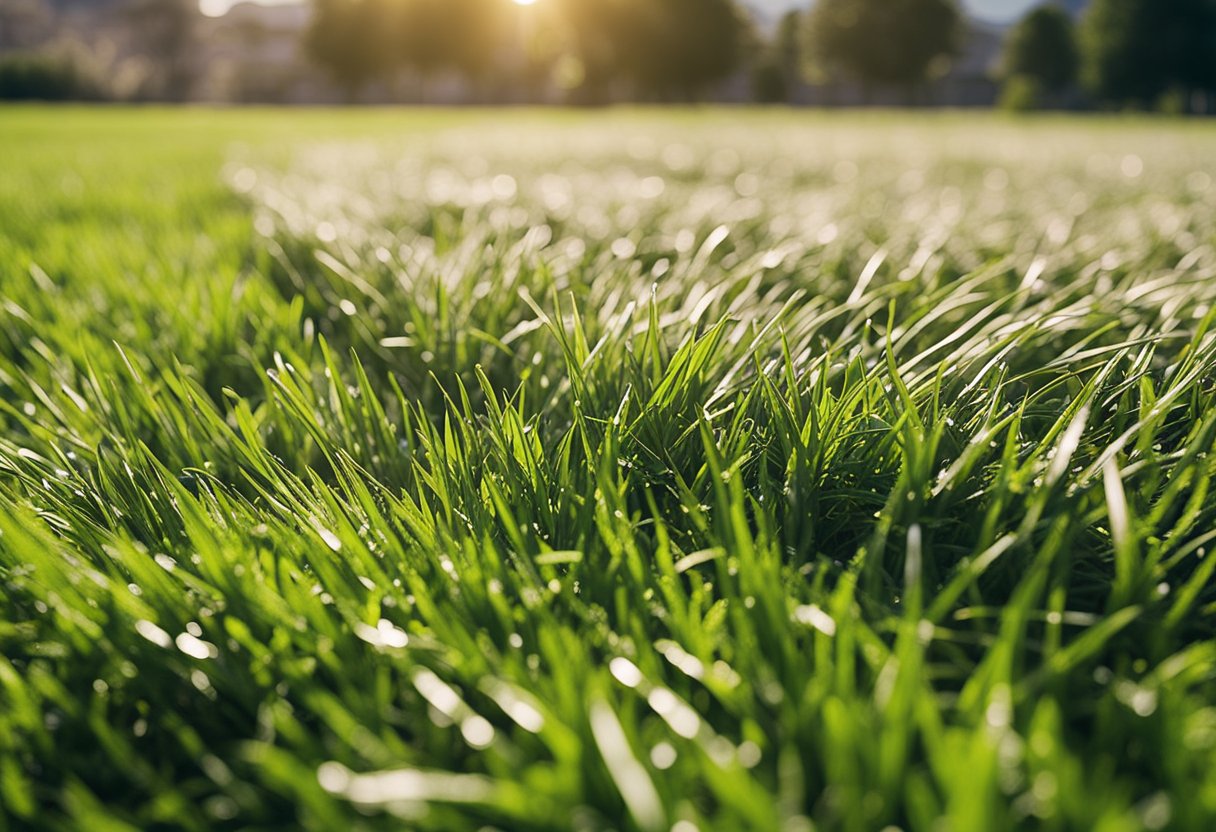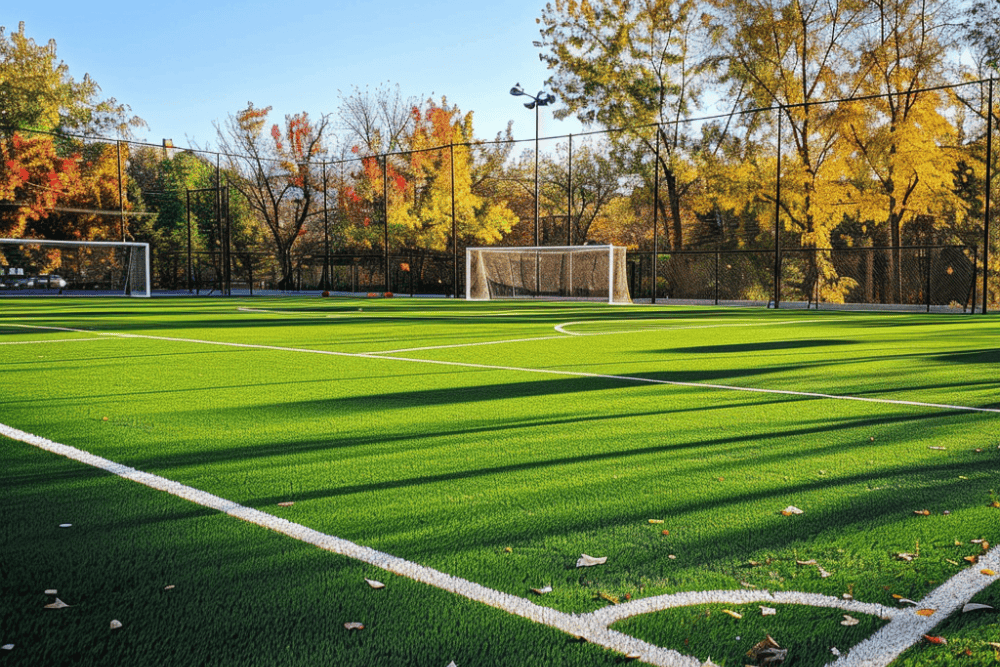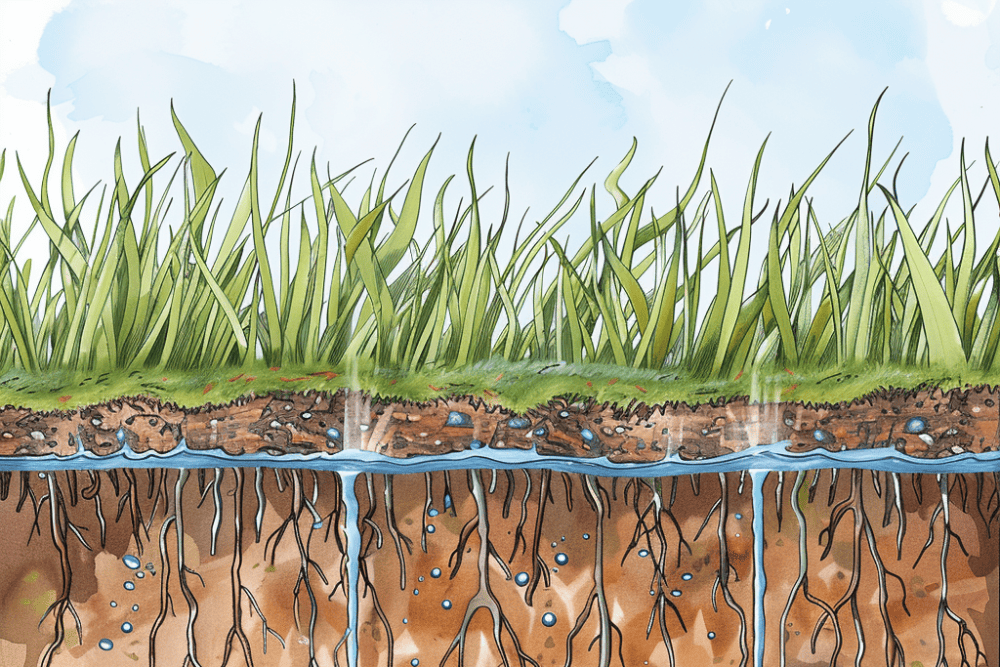An Analysis of Popular Sod Types and Their Suitability for the Grand Junction Climate
Bermuda Grass
Bermuda grass is a warm-season grass that thrives in high temperatures. Known for its fast growth in summer, it establishes quickly and can handle foot traffic well. However, it may struggle in the colder climate and elevation of Grand Junction, CO.
Centipede Grass (Lazy Man’s Grass)
Centipede grass, nicknamed “Lazy Man’s Grass” due to its low maintenance requirements, is a warm-season grass that can tolerate heat and drought. It has a slow growth rate and can thrive in poor soil conditions. Although a popular choice for low-maintenance lawns, its suitability for the climate in Western Colorado is limited.
Fine Fescue Grass
Fine fescue grass is a cool-season grass that can adapt to a wide range of conditions, such as shade, cold temperatures, and minimal water. This grass variety is a good option for Grand Junction lawns, especially in areas with limited sunlight.
Kentucky Bluegrass
Kentucky bluegrass is a popular choice for Colorado lawns, as it can withstand cold temperatures and is fairly drought-tolerant. However, it does require regular mowing and proper care for optimal growth. Modern bluegrass varieties have improved heat tolerance and drought resistance, making it suitable for the Grand Junction climate.
Perennial Ryegrass
Perennial ryegrass is a cool-season grass known for its rapid germination and establishment, making it a good option for overseeding in lawns in Grand Junction. However, it may require more irrigation during hot, dry periods.
St. Augustine Grass
St. Augustine grass is a warm-season grass that requires plenty of moisture. It is not the best choice for Grand Junction due to its water needs and poor cold tolerance.
Tall Fescue Grass
Tall fescue grass is a cool-season grass that can withstand temperatures found in Grand Junction and requires less irrigation in well-drained soils. Its deep root system allows it to access water deeper in the soil, making it a good choice for water conservation and lawns in Colorado.
Zoysia Grass
Although Zoysia grass is marketed as a drought-tolerant and low-maintenance option, it is not suitable for the climate in Grand Junction, Colorado. The cold temperatures and elevation in the region pose challenges for its growth and survival.
How Your Contractor Preps Your Soil and Installs Sod in Grand Junction, Colorado
Step 1: Clear the Soil of Debris
To begin the sod installation process, your contractor will remove any debris from the soil. This includes rocks, weeds, and old grass. This step ensures a clean slate for new sod installation and healthy growth.
Step 2: Till the Soil to Loosen Compaction
Next, the contractor will till the soil. Tilling helps loosen compacted soil, allowing for better root penetration and access to essential water and nutrients. It is a crucial step in promoting rapid and healthy root establishment for your new lawn.
Step 3: Amend the Soil to Enrich with Nutrients
Once the soil is loosened, your contractor will amend it with vital nutrients. This can include adding compost or other organic material to enrich the soil, making it more fertile. Proper soil amendment creates a healthy environment for your sod to thrive in the Grand Junction, Colorado area.
Step 4: Properly Grade the Soil for Drainage
Proper grading is essential for effective drainage and preventing water pooling. Your contractor will slope the soil surface to guide water away from buildings and prevent flooding. An even and well-graded surface lays the foundation for a healthy and functional lawn.
Step 5: Install Automatic Sprinkler System
Before installing the sod, it is essential to have an efficient irrigation system in place. The contractor will install an automatic sprinkler system to ensure your lawn receives consistent water coverage. Regular watering helps keep your lawn healthy and prevents the growth of weeds.
Step 6: Sod is Rolled Out in a Staggered, Interlocking Pattern
With the soil properly prepared, your contractor will then lay down the sod. They will use a staggered, interlocking pattern to promote a seamless, tightly knit lawn. This helps prevent gaps and potential weed growth.
Post Sod Installation Activities
Frequently Water Your Soil
After the sod installation, it is crucial to water it frequently to ensure the roots establish quickly. Your contractor will guide you on the ideal watering schedule based on Grand Junction’s climate and the specific needs of your lawn.
Fertilize According to Instructions From Your Contractor
Lastly, your lawn care company will provide you with instructions on proper lawn care, including fertilization . You can either treat lawn maintenance as a DIY effort, or you can hire a lawn care service to take care of your fertilization, weeding, dethatching, aeration and lawn mowing needs.
Frequently Asked Questions

What is the Best Time of Year to Lay Sod in Grand Junction, Colorado?
The ideal time to lay sod in Grand Junction, Colorado, is really anytime during the growing season – even in the fall. Sod of cool-season turf species can be planted as long as the soil is not frozen. However, it’s important to provide adequate winter watering to maintain the moisture in the sod and the underlying soil, as it may not have enough time to establish a substantial root system before winter.
How Much Does it Cost to Lay Sod in Grand Junction?
The cost of laying sod in Grand Junction varies based on factors such as sod type, project size, and contractor fees. A pallet of sod (450 square feet) can cost anywhere from $150 to $450. Using these numbers along with the size of the space where you’re going to install your sod can provide you a rough estimate of the sod cost before you call a landscaping contractor. Keep in mind that there will likely be other costs associated with the sod including delivery and installation costs.
What are the Differences Between Sod and Artificial Grass?
Sod consists of real grass that has been pre-grown and is sold in sections of soil and root system (also known as turf) – usually on a farm. When laid down on prepared soil, it provides an instant lawn that can quickly establish itself and integrate with the soil beneath. It requires ongoing lawn care services including watering, mowing, fertilizing, aeration, dethatching and more.
Artificial Turf is a completely man-made synthetic grass designed to look like real grass. It is made from man-made fibers, such as polyethylene or nylon, and is constructed over a base of crushed stone and sand. It requires minimal maintenance compared to natural grass, as it does not need mowing, watering, or fertilizing.
Artificial turf is durable and can withstand heavy use without rest periods that natural grass needs for recovery. However, it does not provide the environmental benefits of natural grass, can get hotter than natural grass in direct sunlight, and may have a different feel underfoot. It is often used in sports fields, residential lawns, and commercial applications where low maintenance or durability is a priority.

Artificial Turf is Commonly Used in Sports Fields
How Long Does it Take for the Sod to Establish Roots After Being Installed?
The sod typically takes about 2-3 weeks to establish roots after installation. During this period, it is crucial to follow proper watering and maintenance guidelines to ensure successful root development. After this initial establishment period, the sod will gradually grow and become more resilient, allowing for regular lawn care practices.

It Usually Takes a Couple of Weeks for Grass Roots From Sod to Establish in a New Yard
What are the Essential Soil Prep Steps Prior to Installing Sod?
Proper soil preparation is essential for successful sod installation. Key steps include:
- Clearing the area: Remove any debris, rocks, and existing vegetation from the installation site.
- Grading the soil: Level the area so that water can drain away from structures and avoid pooling. Add topsoil if necessary to achieve a consistent soil depth.
- Tilling the soil: Loosen the soil to a depth of about 3-4 inches. This step promotes better sod-to-soil contact, encouraging root growth.
- Adding soil amendments: If needed, mix in organic materials such as compost to improve soil quality.
- Raking and leveling: Create a smooth surface for sod installation by even distribution of soil, ensuring there are no dips or high spots.
Sod Installation
Refresh Your Yard With a New Sod Installation that is a Perfect Fit for Grand Junction‘s Climate

DIY Yard Care
Check out our blog for information on how to do upkeep around your yard. Tips and tricks for keeping your lawn, plants and trees healthy.

Grand Junction Events Calendar
A monthly listing of the events for you and your family to enjoy in and around Grand Junction

COMPLETE LIST OF ALL SERVICES
All Services
Click a Link Below for More Information About Services Provided
Hardscaping
Curbing
Decks
Fence Maintenance & Install
Fire Pits
Landscape Lighting
Outdoor Kitchens
Patios
Pergolas & Gazebos
Retaining Walls
Walkways
Sprinkler Systems
General
Fall Cleanup-Leaf Removal
Landscape Design
Mulching
Organic Landscaping
Spring Cleanup
Water Features
Xeriscaping
Trees, Shrubs & Perennials
Flower Beds & Planters
Hedge & Shrub Trimming
Stump Grinding
Tree Planting
Tree Removal
Tree Trimming & Pruning
Lawn Maintenance
Lawn Aeration
Lawn Dethatching
Lawn Edging
Lawn Fertilization
Lawn Mowing
Pest Control
Weed Control
Drainage Issues
Sod & Turf
LET’S GET STARTED
Contact Us
West Slope Landscaping Lynx
Phone:
970.712.5471
Email:
operations@westslopelandscapinglynx.com
Hours:
Sun – Sat: 8am – 6pm